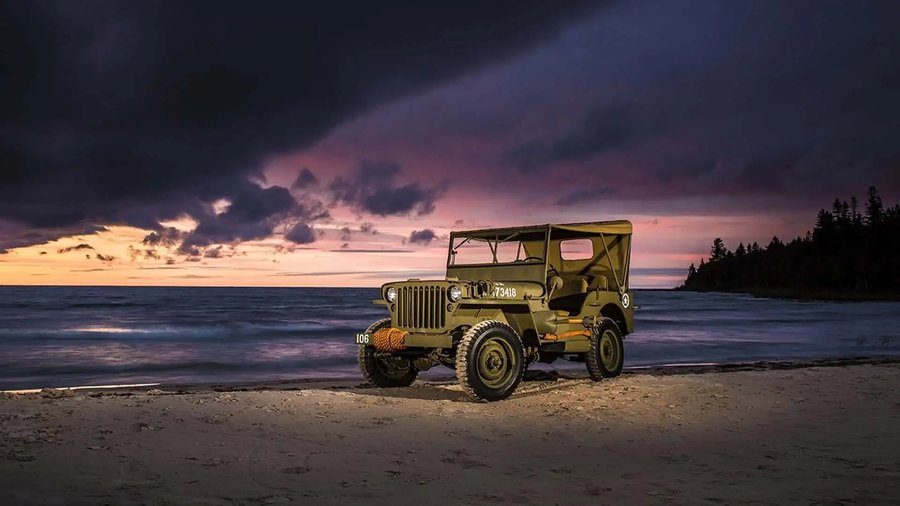This year marks the 80th anniversary of D-Day when, on June 6, 1944, Allied forces landed in Normandy by sea and air. It was an unprecedented military operation in which men and machines began the liberation of Europe. Among these soldiers, planes, landing craft, and ships, one car has become part of history: the Willys MB Jeep.
A true symbol of the Allied landings on the beaches of Normandy on June 6, 1944, the Willys MB (Military Model B) Jeep has a rightful place in the automotive pantheon. Produced from 1941 to 1945 for the American army, it was involved in every battle to liberate Europe from Nazi occupation.
Willys-Overland and Ford responded to a request from the US Army as World War II ravaged Europe by designing one of the very first 4x4s in automotive history. In less than five years, more than 640,000 examples were assembled and, for the most part, sent to theaters of operations. It transported everyone from soldiers to generals.
A Swiss Army Knife on Wheels
Weighing in at a guaranteed one metric tonne (2,204 pounds) and with dimensions of 129.9 inches long, 62.0 inches wide, and 68.69 inches high, the Willys was made to go anywhere, in any weather, with any kind of load. With its Willys Overland MB four-cylinder gasoline engine developing 60 horsepower at 3,820 rpm, the light all-terrain vehicle was capable of a top speed of 65.2 miles per hour, with a range of 236 miles. Easy to maintain and repair, the little car was truly the Swiss Army knife of the Allied forces who landed in France.
Its name might have come from the oral contraction of the letters GP, for "General Purpose," which becomes "Jeep." But it also could have come from the acronym "Just Enough Essential Parts," referring to the vehicle's simple, bare-bone construction. Either way, it was called the Willys MB during the landings, and the Jeep name came later.
In its basic configuration, this little military car came equipped with a machine gun and two submachine guns. It was also equipped with a radio, a key element in its reconnaissance and command missions. Impressed by its sturdiness, the military didn't hesitate to adapt their Jeeps to the situations and requirements they encountered. Some were adapted to the terrain, such as those deployed in the Normandy Bocage during the battle following D-Day, which used a vertical bar on the hood to cut wires strung between two trees by German forces, designed to kill the Jeep's occupants.
The Jeep remains a symbol and is now a collector's item for many enthusiasts. During this year's D-Day commemoration, you'll likely see many Jeeps on French roads.

